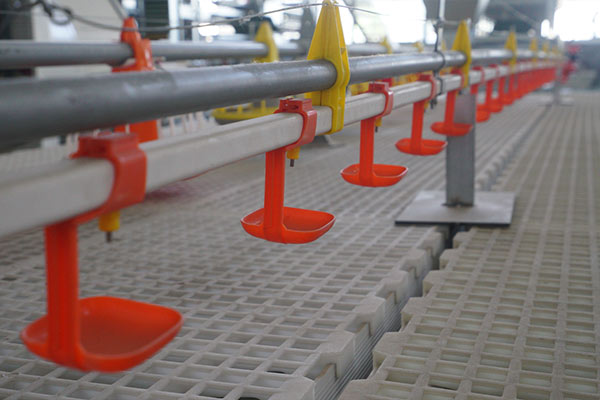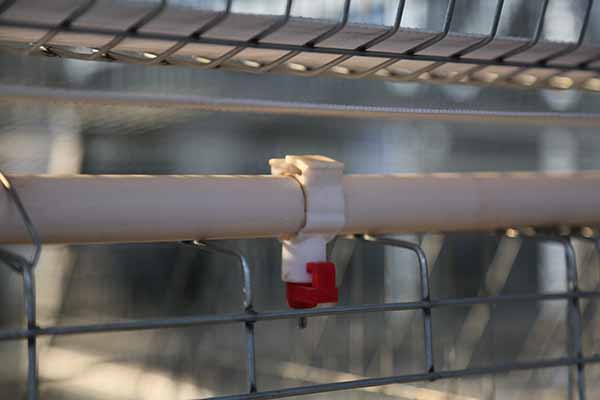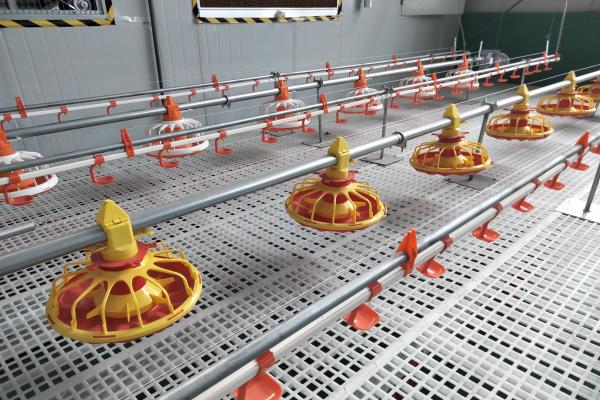How to Choose the Right H-Type Layered Laying Hen Cage Configuration Based on Farm Scale and Environment: A Comprehensive Guide
2025-10-03
Tutorial Guide
Discover how to select the optimal H-type layered laying hen cage system tailored to your farm's scale and environmental conditions. This guide highlights the core advantages of H-type cages in mid-to-large commercial poultry operations, including a space utilization increase of over 30%, automation systems that significantly reduce labor costs, and enhanced ventilation and lighting that promote flock health. Through detailed structure comparisons and real-world farm case studies, you will learn how to align cage layers, layouts, and automated solutions with your flock size, farm layout, and operational objectives—enabling you to build an efficient, sustainable, and modernized egg production facility.

Choosing the Right H-Type Layered Hen Cage Configuration Based on Scale and Environment
When upgrading to a modern, efficient egg production system, selecting the proper H-type layer cage configuration is critical. This guide empowers poultry farm managers like you to make informed decisions matching henhouse scale and site conditions. The H-type layered hen cage system delivers higher space utilization, automation-driven labor savings, and superior hen welfare, fueling profound productivity gains in medium-to-large commercial farms.
Optimizing Cage Layers and Layout by Flock Size
For flocks ranging from 5,000 to 30,000 hens, appropriate cage layering and spatial arrangements vary significantly. Consider these guidelines:
| Flock Size |
Recommended Cage Layers |
Layout Type |
Expected Space Utilization Improvement |
| 5,000 - 10,000 hens |
3-4 layers |
Compact linear rows |
+25% to +30% |
| 10,000 - 20,000 hens |
4-5 layers |
Modular cluster blocks |
+30% to +35% |
| 20,000 - 30,000 hens |
5-6 layers |
Multi-wing expanded setups |
+35% to +40% |
Insight: The H-type cage delivers significant space savings versus traditional flat systems, freeing valuable barn footprint while scaling capacity.
Advantages over Traditional Flat Hen Cages: Stability and Durability
Compared to flat cage models, H-type layered cages offer distinct structural benefits:
- Load-Bearing Capacity: The H-shaped framework increases vertical load tolerance by up to 40%, ensuring long-term cage integrity under heavy stocking.
- Wind Resistance: Aerodynamic design elements reduce lateral wind stress by 25%, critical in open poultry houses.
- Corrosion Resistance: Galvanized steel frames maintain durability even in humid poultry house environments, extending service life by 5+ years.
Integrated Automation: Reducing Labor, Boosting Efficiency
Automated features embedded in H-type cages dramatically cut labor needs and operational costs:
- Automatic Feeding Systems: Ensure precise, scheduled feed delivery reducing manual workload by up to 50%.
- Efficient Manure Removal: Under-cage conveyor belts and scrapers reduce cleaning labor by 40% while improving barn hygiene.
- Automated Egg Collection: Gentle roll-off trays minimize egg damage and cut collection time by 60%, enhancing throughput.
"Uniform lighting and optimum airflow, central to H-type cage design, directly correlate with a 3-5% increase in egg production according to recent poultry welfare studies."
Animal Welfare: Lighting and Air Circulation Impact on Production
The H-type cage excels in providing:
- Even Light Distribution: Eliminates shaded spots to stabilize hens' circadian rhythms, boosting laying consistency.
- Optimal Ventilation: Enhanced airflows lower heat stress and ammonia buildup, safeguarding flock health.
Making Decisions: Tools for Matchmaking Cages to Your Farm Conditions
Practical steps to select the best H-type cage system:
- Assess your available barn space and site layout dimensions.
- Define your flock size and targeted stocking density (recommended: 450-500 cm² per hen in tiered cages).
- Evaluate your budget, balancing upfront investment with automation-driven operational savings.
- Choose configuration layering and layout optimizing space and labor efficiency.
Case Study Highlights:
A commercial farm transitioned from flat cages to a 5-layer H-type system serving 18,000 hens, yielding:
- 40% reduction in labor cost due to automation
- 5% uplift in average daily egg production
- 30% better floor space utilization
- Improved staff satisfaction with reduced manual workload

By carefully matching cage configuration to your specific operational scale, environmental conditions, and goals, you tap into the full potential of better yield, lower costs, and enhanced animal welfare. Scale intelligently with H-type hen cages—where saving labor and space meets maximum output.

Ready to upgrade your henhouse to a proven, high-performance H-type layered cage system? Discover solutions tailored to your operation that deliver labor savings, space efficiency, and higher egg yield starting today.
Get Your Customized H-Type Hen Cage Configuration Plan Now






